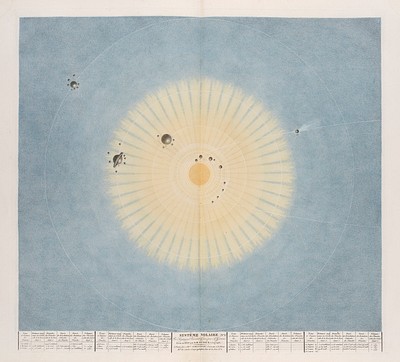Photo Album Tsingtau
Lot 180
Absentee vs Live bid
Two ways to bid:
- Leave a max absentee bid and the platform will bid on your behalf up to your maximum bid during the live auction.
- Bid live during the auction and your bids will be submitted real-time to the auctioneer.
Bid Increments
| Price | Bid Increment |
|---|---|
| EUR€0 | EUR€10 |
| EUR€100 | EUR€10 |
| EUR€200 | EUR€20 |
| EUR€300 | EUR€30 |
| EUR€420 | EUR€30 |
| EUR€480 | EUR€20 |
| EUR€500 | EUR€50 |
| EUR€2,000 | EUR€200 |
| EUR€3,200 | EUR€300 |
About Auction
By Jeschke Jádi Auctions Berlin GmbH
Dec 15, 2022
Set Reminder
2022-12-15 09:00:00
2022-12-15 09:00:00
America/New_York
Bidsquare
Bidsquare : Auction 145 – Rare Books, Decorative Prints, Historical Photography
https://www.bidsquare.com/auctions/jeschke-van-vliet/auction-145-rare-books-decorative-prints-historical-photography-11466
Jeschke Jádi Auctions Berlin GmbH info@jvv-berlin.de
Jeschke Jádi Auctions Berlin GmbH info@jvv-berlin.de
- Lot Description
China - Tsingtau Prachtvolles Lackalbum mit 111 Original-Photographien von Tsingtau und Umgebung, darunter zwei Panoramen. Um 1899-1909. Verschiedene Techniken: Albumin und Silvergelatine, Vintages. Maße von 8,5 x 11 cm bis 22,5 x 28,5 cm. Chinesisches Lackalbum d. Zt. mit Applikation aus Bein auf VDeckel, Mäander-Bordüren aus Perlmutt, goldgepr. Innenkantenfileten, dreis. Goldschnitt und Metallschließe (etwas berieben und bestoßen, Applikation mit kl. Fehlstelle). China - Tsingtau - Splendid lacquer album with 111 original photographs of Tsingtau and surroundings, including two panoramas. Various techniques: Albumen and silver gelatin, vintages. Chinese lacquer album of the time with application of bone on the front cover, meander borders of mother-of-pearl, gilt inner edge fillets, gilt edges and metal clasp (somewhat rubbed and bumped, application with small missing part). - Each with handwr. captions in pencil in German. - Contains photographs mainly from the German colonial period in China. The largest photo, a historical group photo of US deck officers was taken in August 1908, when Admiral John Hubbard, Chief of the East Asian Fleet of the United States, paid a friendly visit of several days to the Germans in Tsingtau. The photos provide an insight into the life and activities of the colonial rulers as well as the Chinese population. In addition to pictures of Tsingtau and its immediate neighbourhood, there are shots of Tsimo, Kaumi, Kiautschou, stations of the Schantung Railway and the wild boulder rubble mountains of Lauschan (panoramic view). The Japanese city of Nagasaki, frequently visited by the Imperial ships, can be seen in 5 pictures, the region of the Suez Canal in 4 large pictures. Impressions of the unknown photographer's departure from home in 1899 are captured in 6 smaller photos. - Back endpaper renewed. Album pages browned and somewhat foxed, prints mostly unaffected. Photographs partly somewhat rubbed, minimally stained and somewhat faded. Some with small missing parts. Overall well preserved and interesting document. Je mit hs. Beschriftung in Bleistift in dt. Sprache auf den Albumseiten. - Enthält Aufnahmen vorwiegend aus der deutschen Kolonialzeit in China. Das größte Photo, ein historisches Gruppenbild US-amerikanischer Deckoffiziere vor der Iltis-Kaserne, entstand im August 1908, als Admiral John Hubbard, Chef der Ostasiatischen Flotte der Vereinigten Staaten, mit 9 Schiffen den Deutschen in Tsingtau einen mehrtägigen Freundschaftsbesuch abstattete. Die Fotos geben Einblick in das Leben und Treiben der Kolonialherren sowie der chinesischen Bevölkerung. Neben Bildern aus der Stadt Tsingtau und ihrer unmittelbaren Nachbarschaft gibt es Aufnahmen aus Tsimo, Kaumi, Kiautschou, von Stationen der Schantung-Eisenbahn und dem wilden Felsblocktrümmergebirge Lauschan (Panorama-Ansicht) mit dem Erholungsheim Mecklenburghaus. Das von den Kaiserlichen Schiffen häufig angelaufene japanische Nagasaki ist auf 5 Bildern zu sehen, die Region des Suez-Kanals auf 4 Großbildern. Impressionen von der Abfahrt des unbekannten Photographen aus der Heimat im Jahr 1899 sind auf 6 kleineren Fotos festgehalten. - Hinterer Vorsatz erneuert. Albumseiten gebräunt und etwas stockfleckig, Abzüge meist nicht betroffen. Photographien teils etwas berieben, minimal fleckig und etwas verblichen. Einige mit kl. Fehlstellen. Insgesamt gut erhaltenes und interessantes zeitgeschichtliches Dokument. * Dieses Werk ist regelbesteuert. Auf den Zuschlagspreis fallen 23,95% Aufgeld sowie auf den Rechnungsendbetrag 7% bzw. 19% Mehrwertsteuer in der Europäischen Union an. This work is subject to the regular margin scheme. There is a 23.95% buyer's premium on the hammer price and 7% or 19% VAT on the final invoice amount in the European Union.Prachtvolles Lackalbum mit 111 Original-Photographien von Tsingtau und Umgebung, darunter zwei Panoramen. Um 1899-1909. Verschiedene Techniken: Albumin und Silvergelatine, Vintages. Maße von 8,5 x 11 cm bis 22,5 x 28,5 cm. Chinesisches Lackalbum d. Zt. mit Applikation aus Bein auf VDeckel, Mäander-Bordüren aus Perlmutt, goldgepr. Innenkantenfileten, dreis. Goldschnitt und Metallschließe (etwas berieben und bestoßen, Applikation mit kl. Fehlstelle).
Condition
- Buyer's Premium



 EUR
EUR CAD
CAD AUD
AUD GBP
GBP MXN
MXN HKD
HKD CNY
CNY MYR
MYR SEK
SEK SGD
SGD CHF
CHF THB
THB







